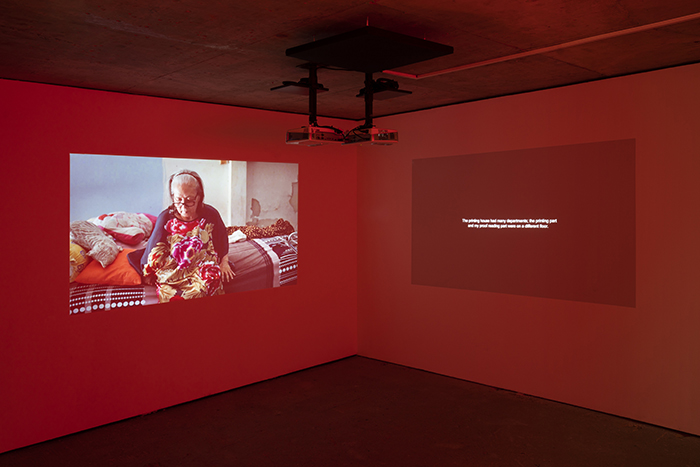Abhijan Toto reflects on new representations of diaspora communities
Curated by Nikita Yingqian Cai, the Guangzhou Times Museum’s chief curator, and the Guggenheim Museum’s Xiaoyu Weng, Neither Black/Red/Yellow Nor Woman brings together works by 19 artists from Asia as well as Europe and Latin America. It is also the first major exhibition at the Times Art Center’s newly opened outpost in Berlin. Taking as a starting point a quote from Vietnamese theorist and filmmaker Trinh T. Minh-Ha, the show broadly works through forms of being and movement beyond narratives of origins or diaspora, and moves away from direct representations of Asia or Asianness. It offers instead a complex look at forms of itinerancy and belonging that are produced through such movement.
The first work one encounters is art historian and researcher Mia Yu’s film essay A Journey from Silence (2017), documenting the archives of Pan Yuliang. A seminal figure in the histories of both Chinese and European modernisms, Pan, who during the 1930s achieved fame and a degree of notoriety for becoming the first Chinese woman artist to paint in a Western style, remains largely forgotten in both contexts, despite having spent most of her life in Paris, where she also taught. Yu’s hands place photographs and archival materials on a table as she narrates a nonlinear presentation of Pan’s life and her own archival investigations. She lays the objects out like tarot cards, conjuring Yuliang’s spirit, and through this idiosyncratic recitation, she challenges the canon of both Western and Chinese art histories. Yu asks how monolithic visions of nation and identity have occluded the complexity of relations that a figure like Yuliang embodied.
Shen Xin’s video installation Warm Spell (2018) alludes to the magical and the sensuous. Shot on the island of Koh Yao Yai in Thailand, the work weaves together fictional and real interviews, looking at the complex entanglement between queer bodies, spirits, economies, race and movement, juxtaposing the figure of the migrant, the expat and the tourist. Moving fluidly between awkwardly staged fiction, documentary and mythical forms of storytelling, the artist collapses distinctions between local and nonlocal to dramatise the social production of place.
One of the most interesting constellations in the show is between Copenhagen-based Jane Jin Kaisen’s Apertures/Specters/Rifts (2016), French-Colombian artist Laura Huertas Millán’s jeny303 (2018) and Bangkok-based Arin Rungjang’s Gossamer Rungjang ‘Mother’ (2014), for the way they examine microhistories in the context of grand narratives and complicate ideas of agency beyond narratives of victimhood. Kaisen’s blood-red lightbox interweaves a pair of narratives concerning journeys to North Korea: her own, in May 2015, and that of Danish journalist Kate Fleron in May 1951, at the height of the Korean War. Kaisen intersperses Fleron’s images with her own, blurring the lines between historical truth and the imagination of a place. In Rungjang’s two-channel videowork, one screen dwells on the resting body of his mother, while a second screen narrates her story following his father’s death due to injuries inflicted by neo-Nazis during a business trip to Hamburg in 1977, their juxtaposition speaking to resilience in the face of unforeseen and obscured violence. Huertas Millán’s work interlaces footage from Bogotá’s now-disappeared brutalist icon edificio 303, once a hotspot of activism, with a conversation with Jeny, a queer person who talks casually about their delinquency and criminal activities.
Through these, and works by Thao Nguyen Phan, Mai Ling, Evelyn Taocheng Wang and others, the show charts a course that looks beyond particular frameworks of identity politics and narratives of victimhood, while acknowledging continued pain and oppression, and offers instead a more refreshingly nuanced position.
Neither Black/Red/Yellow Nor Woman, Times Art Center, Berlin, 28 September – 11 January 2020
From the Spring 2020 issue of ArtReview Asia
